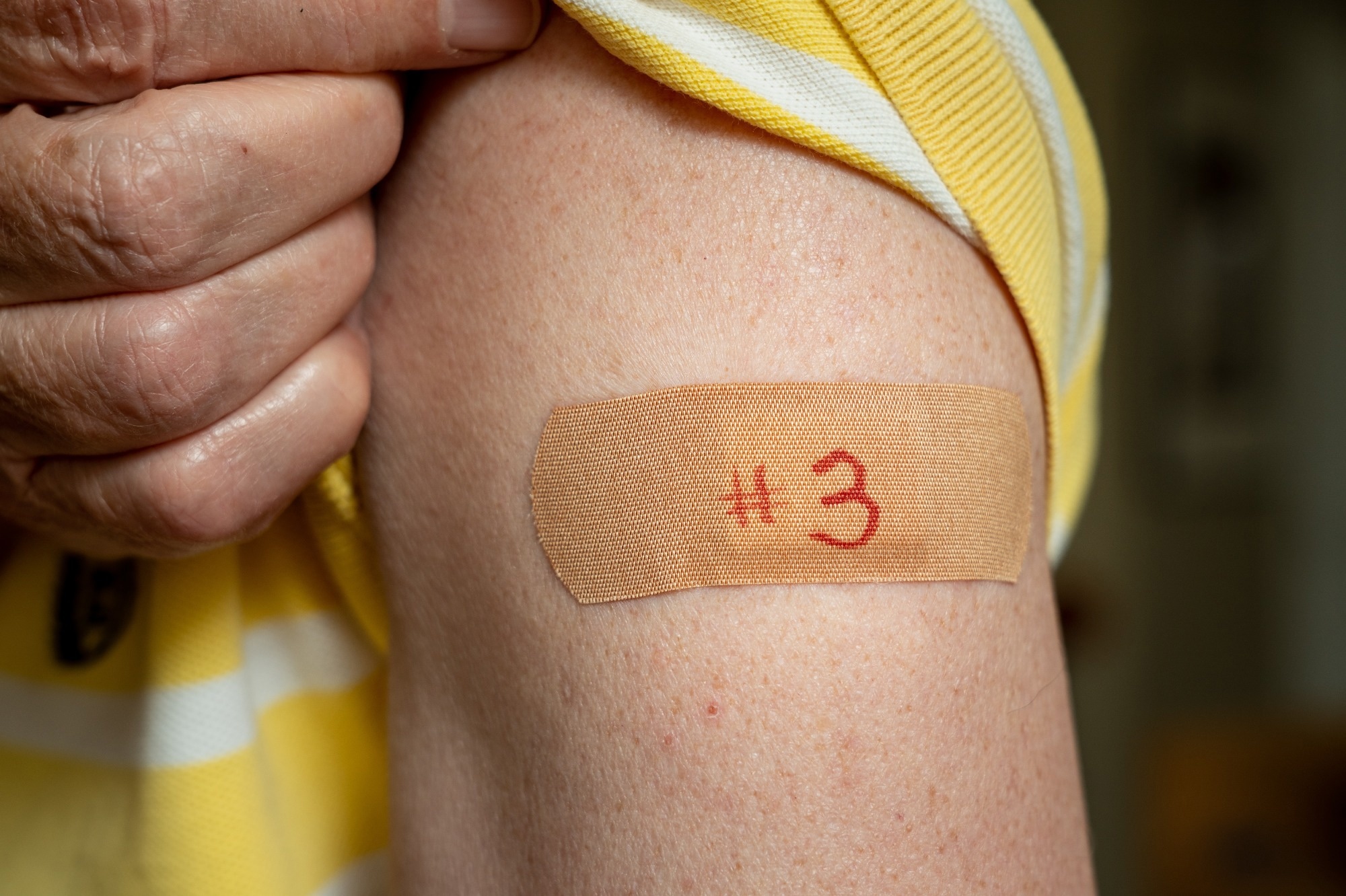In a recent scientific paper published in the journal Nature Microbiology, researchers reproduced two target trials using electronic health records (EHRs) of the Department of Veterans Affairs (VA) to compare the effectiveness of the third dose of BNT162b2 or messenger ribonucleic acid (mRNA)-1273 vaccine among United States (US) veterans.

Background
There is a lack of head-to-head comparative studies of the effectiveness of a third booster dose of different mRNA-technology-based coronavirus disease 2019 (COVID-19) vaccines. An ideal comparative effectiveness study of mRNA vaccines should cover racially diverse populations and evaluate possible differences in vaccine efficacy based on the time when an individual completed the primary vaccination series. Most importantly, these studies should account for the time windows of the prevalence of severe acute respiratory syndrome coronavirus 2 (SARS-CoV-2) variants.
During the current SARS-CoV-2-induced pandemic, vaccination effectively reduced the burden of severe disease and death from COVID-19. Especially, booster doses of BNT162b2 and mRNA-1273 vaccines countered waning immunity and broadened protection against novel, highly transmissible SARS-CoV-2 variants. In one of their previous work covering 439,684 US veterans, researchers found that both mRNA-1273 and BNT162b2 lowered the risk of SARS-CoV-2 infection and severe disease outcomes during SARS-CoV-2 Alpha variant prevalence.
About the study
In the present study, researchers matched recipients of BNT162b2 or mRNA-1273 vaccines in a 1:1 ratio based on their risk factors to estimate their comparative effectiveness over 16 and nine weeks in the Delta-Omicron and Omicron period, respectively, for five COVID-19 outcomes:
- reported SARS-CoV-2 infection,
- reported symptomatic SARS-CoV-2 infection,
- SARS-CoV-2 infection-related hospitalization,
- intensive care unit (ICU) admission, and
- death.
The veterans in the first emulated trial received the third dose of BNT162b2 or mRNA-1273 vaccines between 20 October 2021 and 8 February 2022. This period corresponded to SARS-CoV-2 Delta and Omicron variants prevalence. For each veteran in the primary analysis, the team started follow-up on the day of the third vaccination (baseline). It ended 16 weeks after baseline, death, or the end of study duration, i.e., 15 February 2022, as applicable.
The veteran population of the second emulated trial received the third dose of any of the two mRNA COVID-19 vaccines between 1 January and 1 March 2022, the period of only Omicron predominance. The median follow-up continued over nine weeks, during which the team documented 214 SARS-CoV-2 infections.
Study findings
In the first emulated trial, 147,553 and 214,728 veterans received the third dose of BNT162b2 and mRNA-1273, respectively. The baseline characteristics of 65,196 BNT162b2 recipients matched to an equal number of mRNA-1273 recipients were comparable compared to the eligible population. The median age of this veteran population was 70 years, 96% were males, and 24% were Blacks.
During the 16-week follow-up spanning Delta and Omicron prevalence, the researchers documented 2,994 SARS-CoV-2 infections, of which 200 were symptomatic COVID-19 cases, 194 sought hospitalization, 52 needed ICU admission, and 22 culminated in death. During this time, the estimated risk of reported infection for the BNT162b2 and mRNA-1273 third dose was 353.9 and 308.5 events per 10,000 individuals, respectively.
In the second emulated trial, 25,557 and 36,809 eligible veterans received the third dose of BNT162b2 mRNA-1273, respectively. Like in the first trial, the matched population comprised 7,894 BNT162b2 and an equal number of mRNA-1273 recipients with comparable baseline demographic and clinical characteristics relative to the eligible population. They had a higher proportion of men and White people.
During nine weeks of follow-up amid Omicron predominance, the estimated risk of documented SARS-CoV-2 infection was higher with a third dose of the BNT162b2 vaccine vs. mRNA-1273. Accordingly, the estimated risk ratio was 1.57, presented as events per 10,000 individuals.
Conclusions
The present study remarkably showed the comparative effect of the third (booster) dose of two mRNA vaccines, BNT162b2 and mRNA-1272, among a nationwide cohort of US veterans. Both vaccines reduced the absolute risks of breakthrough SARS-CoV-2 infections and severe COVID-19 outcomes. However, mRNA-1273 recipients had a lower risk of COVID-19-related adverse events over 16 weeks of follow-up than the mRNA-1273 vaccine recipients, particularly for reported SARS-CoV-2 infections. The findings remained comparable across periods spanning Delta and Omicron predominance and only Omicron predominance. The authors advocated continuous evaluation of the comparative effectiveness and safety of additional (booster) doses of COVID-19 mRNA vaccines in the future.
Journal reference:
- Barbra A. Dickerman, Hanna Gerlovin, Arin L. Madenci, Michael J. Figueroa Muñiz, Jessica K. Wise, Nimish Adhikari, Brian R. Ferolito, Katherine E. Kurgansky, David R. Gagnon, Kelly Cho, Juan P. Casas & Miguel A. Hernán, Comparative effectiveness of third doses of mRNA-based COVID-19 vaccines in US veterans. Nat Microbiol (2023). DOI: https://doi.org/10.1038/s41564-022-01272-z, https://www.nature.com/articles/s41564-022-01272-z





